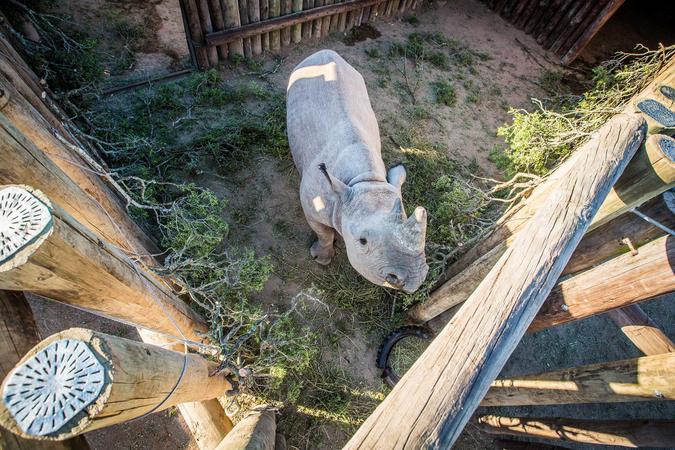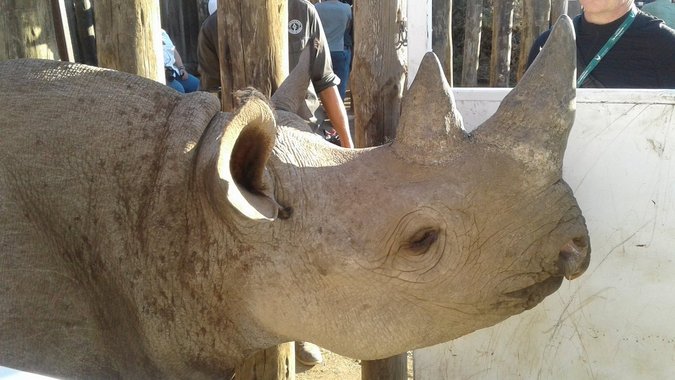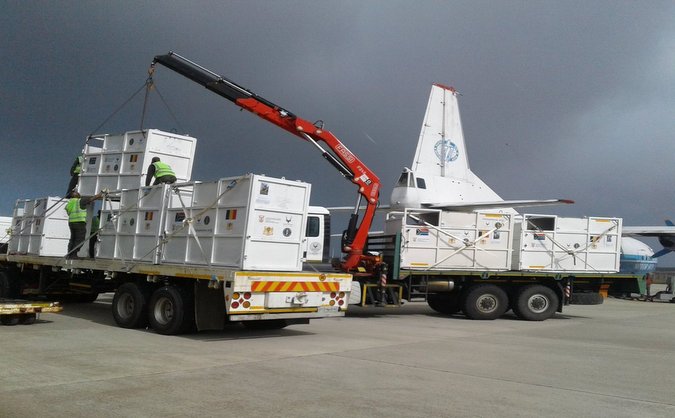
Sourced from third-party site: African Parks
Through rare institutional cross-collaboration, an initial consignment of up to six black rhinos are being translocated by air over 3,000 miles from South Africa to Zakouma National Park, a secure park in Chad managed by African Parks in partnership with the government since 2010. The announcement of this unprecedented international conservation initiative happened on Thursday, 3rd May, and is thanks to the collaboration of South Africa’s Department of Environmental Affairs (DEA), the Chadian Government, conservation non-profit African Parks and South African National Parks (SANParks).
The project is being undertaken to aid the long-term survival of the species on the continent and to contribute to restoring biodiversity as a national asset for Chad. While the country’s last black rhino was recorded in 1972, over the past seven years African Parks has implemented extensive measures to practically eliminate poaching in Zakouma, making it possible to reintroduce this critically endangered species after almost half a century of its absence, establishing Chad as a new range state for the species.
The governments of South Africa and Chad signed a memorandum of understanding in October 2017 to enable the translocation of up to six black rhinos to Zakouma National Park in southern Chad with the aim of returning the species to the nation almost fifty years after its local extinction. Following two years of substantial planning to ensure the animals’ safety and well-being, on Thursday six wild black rhinos were moved from a holding facility in South Africa’s Eastern Cape to begin a 3,000-mile translocation by air to Zakouma. Following their arrival in the park, the rhinos will be released into specially built bomas (or enclosures) for a short period of time to enable close monitoring and acclimatisation before being released into a wider, intensively protected sanctuary.

The cross-continent translocation culminates in the return of rhinos to a country that is exercising a bold vision in securing its wildlife and natural landscapes, building a future in which biodiversity has a firm place in contributing to socio-economic growth for its people.
“We are resolved to create a secure and prosperous future for wildlife and people, so that generations of Chadians can experience the benefits of healthy and intact natural landscapes. It is a mark of the strength of our partnership with African Parks and the transformation of Zakouma in to a secure sanctuary that we are now able to bring rhinos back to Chad where they will receive enduring protection,” said Chad’s Ambassador to South Africa Sagour Youssouf Mahamat Itno. “Their reintroduction signifies an important advancement in the restoration of the park, furthering its potential as a conservation area to contribute through tourism to local economies and social development”.
Last year the Chadian Government signed an agreement with African Parks to expand their management mandate for Zakouma to include critical peripheral reserves and adjoining wildlife corridors, which was followed soon after by an agreement with African Parks for the management of the 40,000 km² Ennedi Natural and Cultural Reserve, a World Heritage Site in the north-east of the country. The conservation of these important areas is possible because of the significant support of the European Union.

“All too often, headlines on rhinos are about their demise as they teeter on the brink of extinction. However, today we are participating in an historic event and peering into a brighter future for this species which has persisted on this planet for millions of years,” said Peter Fearnhead, CEO of African Parks.
He continues, saying: “Regional cooperation is critical if we are to give these iconic animals a future on this continent. Our collaboration with the Chadian and South African governments and SANParks gives us a unique opportunity to encourage population growth, expand rhino range, and contribute to restoring biodiversity in Chad. The extraordinary gains made in protecting and revitalising Zakouma result from our partnership with the Government of Chad and their commitment to conservation, enabling this profoundly important reintroduction to take place and providing a truly hopeful story for rhinos across Africa”.
To comment on this story: Login (or sign up) to our app here - it's a troll-free safe place 🙂.![]()






